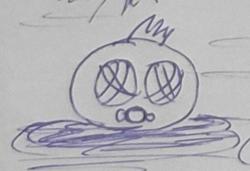Explicitly passing gradients can be slower in some situations, but it depends on the hardware as well as the specifics of the shader itself. Sending the gradients requires sending more data from the shader unit to the texture unit, and in some cases it can cause texture sampling to run at a lower rate.
There are 3 ways (that I know of) that you can handle sampling your textures in your deferred pass:
- Pack all scene textures into atlases or arrays
- Use virtual texturing techniques, which effectively lets you achieve atlasing through hardware or software indirections
- Use bindless resources
When I experimented with this I went with #3 using D3D12, and it worked just fine. The one thing you need to watch out for with bindless techniques is divergent sampling: if different threads within a warp/wavefront sample from different texture descriptors, the performance will go down by a factor proportional to the number of different textures. Generally your materials tend to be coherent in screen-space so it's not too much of an issue, but if you have areas with many different materials only covering a small number of pixels then your performance may suffer.
I also disagree with ATEFred that it won't help you at all. One of the primary advantages of deferred techniques is that it can decouple your heavy shading from your geometric complexity, which helps you to avoid the reduced efficiency from sub-pixel triangles. Deferred texturing in particular aims to go even further than traditional deferred techniques by only writing a slim G-Buffer and moving all texture sampling to a deferred pass, which makes it even more ideal appealing for your situation. Obviously your G-Buffer pass is still going to be slower than it would be with a lower geometric complexity that has a more ideal triangle-to-pixel ratio, but in general the more you can decouple your shading from rasterization the less you'll be impacted by poor quad utilization. That said, you should always be thorough about gathering performance numbers using apples-to-apples comparison as much as you can, so that you can make your choices based on concrete data. Some things can vary quite a bit depending on the scene, material complexity, the GPU, drivers, etc.





